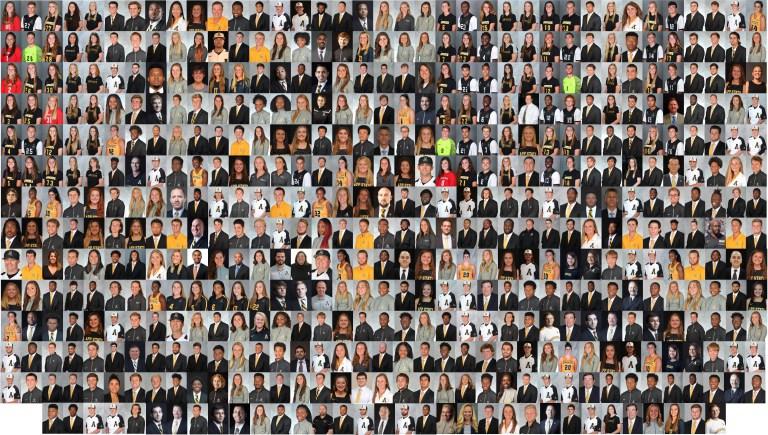Black and white: Athletics is more diverse than campus
Story by: Moss Brennan, Enterprise Editor and Brooks Maynard, Sports Editor
Photos by: Hayley Canal, Staff Photographer, Lindsay Vaughn, Senior Photographer and Moss Brennan, Enterprise Editor
Videos by: Moss Brennan, Enterprise Editor
Graphic by: Nora Smith, Graphics Editor
Out of the 3,306 new freshmen that were on campus in the fall of 2017, 106 of them were black, according to data on App State’s Institutional Research, Assessment and Planning (IRAP) website. On the App State campus in 2017, minorities made up 17.8 percent of the freshman class while black students alone made up 3.2 percent of the freshman class.
In the fall of 2017, App State as a whole had a black student population of 707 while there were 15,610 white students. Black students make up 3.7 percent of the entire student body according to data from IRAP.
In the fall and spring semesters, there were a total of 111 black athletes who were enrolled in the school.
In 2013, the Chancellor’s Commission on Diversity was created before Sheri Everts became chancellor. In 2014, Chancellor Everts charged the group with coming up with “recommendations focused on the recruitment and retention of students, staff and faculty from underrepresented groups.”
The group came out with 14 proposals to implement initiatives to better diversify and educate App State’s campus.
There are also currently 31 initiatives that range from introducing a bias incident reporting protocol and having hair services for students of color.
In overall diversity, which looks at racial, ethnic, age, geographic and gender diversity, App ranks 1,184 out of 2,355 universities nationwide, according to College Factual. App State ranks 2,175 out of 2,718 nationwide in ethnic diversity.
There were 111 black athletes enrolled for the 2017-18 school year out of 511 total athletes at the university, making up 21.7 percent of the athletic population. For the 2016-17 school year, black athletes made up 24.4 percent of players in the NCAA sports in which App State participated, according to the NCAA Sport Sponsorship, Participation and Demographics Search.
Coming to App, players in athletics get to see a different side of the university that the rest of student body does not.
“Sometimes you just — sometimes you want to be around people that look like you,” Brandon Smith said. “So like it’s a big thing — you want to see teachers that you can relate to sometime or — it’s just feeling socialized because you want to go to a party and like it’s not the same look that you grew up with.”
Basketball, football and track and field are all sports in the Sun Belt Conference that have a majority of black athletes according to data from the NCAA Sport Sponsorship, Participation and Demographics Search.
Brandon Smith, a junior on the track and field team, is from Fayetteville, North Carolina, and attended one of the lowest income schools there: Douglas Byrd High School, according to Brandon Smith. He ran track and took Advanced Placement and honors level classes because he did not just want to be an
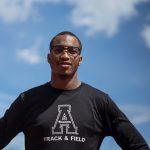
athlete.
“I became student body president my senior year. Before that I was freshman class president and sophomore vice president,” Brandon Smith said.
Coming to App was almost a culture shock for Brandon Smith, but because he was part of SGA and went to statewide conferences, he saw the lack of diversity. He said that even though he was prepared for it, he still had to get used to being on campus.
Sage Holley was a redshirt freshman on the football team during the 2017-2018 season. He is transferring this fall to play football at ECU to be closer to home.
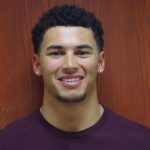
Holley went to Christ School, which is a boarding school, in Asheville, North Carolina. When he came to App it was not that much of a shock because Holley’s high school was not very racially diverse until his junior and senior year Holley said.
Playing football, Holley felt that as a football team, they were separate from the rest of campus.
“The team is kind of its own self-contained, little school. We’re always together, always doing stuff together,” Holley said. “The outside student body doesn’t matter as much because we are always with the team.”
The 2017 football roster made up .006 percent of App State’s student body population.
For other athletes, it is not quite a culture shock coming to App.
Justin Forrest is a freshman guard on the men’s basketball team. He went to Greenforest-McCalep Christian Academy, a private school in Decatur, Georgia. His graduating class was about 23 people according to Forrest.
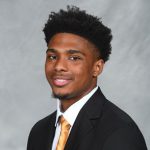
The school was a predominantly black school but did have kids from other countries that attended.
“We tried to get some transfer kids from out of the country. You know we had a couple of Nigerian kids play basketball at the school,” Forrest said. “We had a couple of Asian and Chinese kids who went to the school.”
When Forrest got to App State, it really opened up his eyes to being at a bigger school that is not predominantly black.
“It was different but it was different in a good way because it really opened up my eyes and seeing different culture and different races and being able to interact with them,” Forrest said.
Maya Calder, freshman forward on the women’s basketball team, went to National Christian Academy in Fort Washington, Maryland, and played on the varsity basketball team. Her school, which was also a middle school, was predominately black. She said there were 100 to 200 kids total at her school.
Since coming to App, Calder has been very excited about all the people she has met and the experiences she has had in the area.
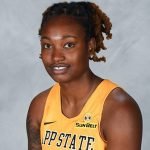
“Like even my teammates, she’s from Spain and Australia, and it’s like you find out stuff that you wouldn’t know about different people,” Calder said. “You just get to see different things. I think that’s a good thing being here.”
She believes that athletics is more diverse because everyone is together all the time and feels more diverse.
EJ Scott is a junior defensive lineman from Farmville, North Carolina, who attended Farmville Central High School and also played football at Shaw University in Raleigh before transferring to App State, where he joined the football team as a sophomore walk-on in the spring of 2017. Shaw University is one of ten historically black colleges and universities, or “HBCU’s” in North Carolina according to edonline.com.

“(At Shaw) there’s more of my race, I guess, but there wasn’t really anything I couldn’t handle when I got here because I’m friendly,” Scott said. “It doesn’t matter what you are, I’m still going to talk to you until you give me a reason not to.”
Christian Insley played football at North Carolina A&T State University before coming to App in the 2011-2012 school year and graduated in 2015. He did not play football for App but instead focused on his studies.
“I think (diversity) is one of the biggest issues there is. That and the school is very progressive. You know they are definitely moving in the right direction, but it’s hard to see that sometimes when the community around the school isn’t so apt to move in that same direction, if that makes sense,” Insley said.
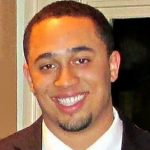
Christian Insley, former student. Photo courtesy of Christian Insley.
Insley is not the only person who thinks that the region is the reason App is not as diverse as it could be.
“The geographical location of App isn’t necessarily like beneficial to having a super diverse campus like it’s not UNC; it’s not NC State; it’s not like in an area of people who really wanna go to school, like it’s not cultural and you know political hub of anywhere,” Holley said.
Holley said that if App did not have a good football team he probably would not have come to the school.
In the 2010 census, black or African-Americans made up 3.5 percent of the population in Boone. The total population of black or African-Americans was 603 while the total population of whites was 15,746.
The total population of Boone in 2010 was 17,122.
“Especially where Boone, North Carolina, is like it’s in the upper mountains. I guess you can think about it, most African-Americans wouldn’t think about coming to a school in this type of area,” Brandon Smith said.
With Calder, she was not really sure about coming to a school in the mountains. She said that being here is way different than being at home in a bigger city, but she is starting to get used to it. Calder also said that she thinks people of color want to go to HBCU’s more because they will have more connections.
Scott also talked about why students of color choose to go to an HBCU.
“It’s cold for one so I can understand why no one would come up here. People have their opinions on where they want to go,” Scott said. “Most people want to go to HBCU’s because their parents went there or that’s just what they know. Coming out of high school, we didn’t have any people try to get into North Carolina or Appalachian State or places like that. They chose to go to Winston-Salem State or N.C. A&T or somewhere like that.”
On the other hand, Forrest thinks that athletes of color would choose to come to school here because of how different the culture is.
“I actually think athletes would come here because of the differences of culture but it’s one of the reasons I came here, to be around a different culture and try to expand my horizons, as I would say, to become a different person and be around different people,” Forrest said.
While some students may come to expand their horizons, sometimes experiences around Boone are not that great.
Insley had to deal with being profiled and called names while working in Boone during his time at App. While he thinks the university is doing a good job, he thinks the surrounding area can do better.
“When you get a small town like Boone, a small mountain town, really the middle of nowhere North Carolina, the community around campus, around the school, I don’t think moves at the same pace as the university does in terms of being inclusive to the people that aren’t white on campus,” Insley said.
One of the incidents that Insley faced was being called the N-word by a white female tennis player while he was working at a bar in Boone. She was “pretty inebriated” at the time as it was her 21st birthday.
Insley said that he talked to the Multicultural Center about it and they contacted her coach. Her coach made her schedule an appointment with him and apologize.
“I don’t really know to be honest with you,” Insley said. “I mean it was as sincere as she made it seem. She seemed to be really really apologetic, you know, ‘I’m so sorry,’ but I don’t really know if she was sorry for what she said or if she was sorry for the damage that she possibly could have caused for herself and her tennis career.”
He also said that he likes to think her apology was really sincere, but it was hard to tell because of the situation.
As athletes progress through school and start going to their major classes the diversity starts to dwindle. Brandon Smith said that it started to feel as if he was the only person of color in the classes he took and that no one looked like him.
He also said that he sometimes feels singled out in class because a teacher may notice he is not there because of his skin complexion.
Forrest, who unlike Brandon Smith is a freshman, sees diversity when he is in his classes.
“I have, mostly my classes actually have been evened out if you actually look at it now that I think about it,” Forrest said. “It actually evened out with black and white students so you know it’s not really that much of a difference.”
While classes may be diverse for some and not so much for others, it is also the campus as a whole.
“Sometimes you just — sometimes you want to be around people that look like you,” Brandon Smith said. “So like it’s a big thing — you want to see teachers that you can relate to sometime or — it’s just feeling socialized because you want to go to a party and like it’s not the same look that you grew up with.”
According to the NCAA Sport Sponsorship, Participation and Demographics Search on coaches, in the Sun Belt Conference in 2017 there were a total of 88 men’s teams head coaches and 112 women’s teams head coaches. Of those 200 head coaches, 22 were African-American.
There were only two African-American women head coaches.
There were 321 men’s sports assistant coaches and 250 women’s sports assistant coaches in the Sun Belt Conference, for a total of 571.
Out of all the assistant coaches, 144 were African-American, 34 of which were women.
“I mean it’s what I’m used to but a lot of higher positions of coaching in college or you know bigger high schools, the diversity ethnically is really narrowed down like the higher up the ranks you get,” Holley said.
“When we went from the Southern Conference to the Sun Belt it was a eye opener,” McLean said. “It was a lot more minorities in the Sun Belt and track and field than there was in the Southern Conference.”
Coaching positions in NCAA sports are dominated by white males in men’s sports. There are 7,710 white male head coaches and 736 black head coaches; 17,751 white male assistant coaches and 3,906 black assistant coaches; 364 white female head coaches and 64 black female head coaches; and 2,017 white female assistant coaches and 417 black female assistant coaches, according to data from the NCAA Sport Sponsorship, Participation and Demographics Search.
Out of the total number of male head coaches for men’s team in the NCAA, black head coaches make up 8.2 percent.
Damion McLean is the associate head coach for track and field and also coaches the short sprints and horizontal jumps. He has been coaching at App State for 15 years but also went to school at App.
“I actually came to App and ran track. Coach Curcio recruited me. He’s still on staff,” McLean said. “Ran track here from ‘97 to 2001. Went out to the real world for one year then my coach left here. I’ve been here coaching for — this is my 15th year. Enjoy it, really enjoy it.”
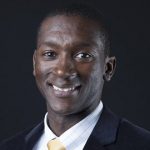
Being at App almost 20 years, McLean has seen a big improvement in diversity on campus.
“Me coming to Appalachian earlier — what 20 years ago — as an athlete and seeing more and more minorities be in the athletic programs over the years, cause when I was in school here it really wasn’t that many in Appalachian as a whole if you look at everything,” McLean said. “Since then things are getting better and better and better. So I would say the athletic department and the school is doing a really good job in diversity.”
McLean said that because athletics is in their own bubble, when he walks around campus he always sees new faces. When McLean graduated in 2002, the population of Boone was 13,472, according to the 2000 census. Out of the total population, there were 461 black or African-American residents making up a total of 3.4 percent of the population according to the 2000 census.
When McLean recruits athletes of color he really does have to talk to the parents because they ask him, “Why should I send my kids to the mountains?” He also said that “some parents look at Yosef. You know it’s a Caucasian man with a beard and a gun,” which can scare or “feed off some” fears for some people.
McLean stresses to athletes of color that it really has been improving since his time as an athlete and as a coach.
When McLean and others recruit athletes they really look for athletes who have great support systems back home.
One of the other things that McLean does is make sure those from less fortunate backgrounds have the support system they need when they come to campus.
“Of course there are going to be some less fortunate kids that’s always going to need some support when they do get here, and we have to fill that role for those athletes too,” McLean said.
D.J. Smith is the new coach of the outside linebackers on the Mountaineers football team. He played for App from 2007 to 2010 before playing four years in the NFL.
He came back in 2016 to be the director of recruiting relations, then in 2017 he was a senior defensive analyst before becoming the outside linebackers coach in 2018, according to his bio on the athletics website.
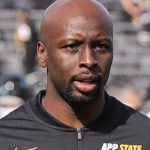
“I would say it is a lot more diverse today. I’m not really sure why it’s changed, but it’s for the good of the university, it’s for the good of the athletic program,” D.J. Smith said. “With our athletics program being on the up and up of late, more people are paying attention to us so more people are gravitating towards Boone, so the environment and the atmosphere is definitely different.”
When D.J. Smith got to App State in 2007, there were 581 black or African-American students on campus versus 549 in 2010 when he left according to IRAP.
D.J. Smith said that the football team has a question of, “Is he an App State guy?” when they look to recruit someone.
“It takes a different type of athlete to come up here and be in this environment. There’s not much to do in Boone, so it’s just going to be about school and football,” D.J. Smith said. “A lot of guys can’t fit that mold if they come from the big city life and they’re looking for a big party town, a ‘downtown’ and things to get in to during the offseason. That’s not what this place is.”
With such a big disparity with diversity in coaching, McLean believes that App is on the right track but could do more to get to a more diverse staff.
When App State moved from the Southern Conference to the Sun Belt Conference there was a difference diversity-wise.
“When we went from the Southern Conference to the Sun Belt it was an eye-opener,” McLean said. “It was a lot more minorities in the Sun Belt and track and field then there was in the Southern Conference.”
 In the Southern Conference in 2017, there were seven white male head coaches and one black head coach for both men’s indoor and outdoor track teams, according to the NCAA. For the women, there were eight white male head coaches for indoor and outdoor while there was just one black male head coach for indoor and two for outdoor.
In the Southern Conference in 2017, there were seven white male head coaches and one black head coach for both men’s indoor and outdoor track teams, according to the NCAA. For the women, there were eight white male head coaches for indoor and outdoor while there was just one black male head coach for indoor and two for outdoor.
The Sun Belt Conference also had white head coaches in the majority. Men’s indoor and outdoor had five white male coaches each, with one black male coach for indoor and two for outdoor. Both women’s indoor and outdoor had six white male coaches to three black male coaches.
For athletes in 2017, the Sun Belt had 608 white track runners and 672 black runners. The Southern Conference had 756 white track runners and 302 black runners.
“We’re very diverse in all the sports here, whether it be male or female. Coaches in every sport are diverse as well,” D.J. Smith said.

Some players feel that the diversity in coaching is something that players learn to live with.
“I think it’s something that we just grow to live with because you look at any college program and most D-1 programs or predominantly white institutions, it’s like the coaching staff is not very diverse,” Brandon Smith said.
Brandon Smith also feels that, as an athlete, connections with coaches are a lot closer than with teachers.
“Weaver, me and him, coach Weaver, we can talk and I feel close to him. Like I know he talks to my parents like I know it’s more of a relationship, and I can trust him a little bit more,” Brandon Smith said.
Scott cares about one thing when it comes to coaching.
“As long as you’re coaching me for the right reasons and you’ve got your priorities straight and we can connect on the same level, then I don’t care what ethnicity you are, as long as we’re working toward the same goal,” Scott said.
McLean believes that it is really up to the individual institutions, not the NCAA, to create a more diverse coaching staff.
“Keep recruiting minorities just as a student because I mean athletic wise we’re still going to do that anyway no matter what sport it is or anything like that,” McLean said. “Wouldn’t matter what coach it is. As a university, it can still do those things positively.”
“Most of the time I’m like the only black student in there and they just automatically assume I am an athlete,” Brandon Smith said. “Which yeah I am an athlete but sometimes you don’t want to be put down into that just that aspect of like — and most people think you’re just here cause you’re an athlete but I actually have more academic scholarship money than I do athletic scholarship money.”
Brandon Smith believes that once you get out of the freshman level classes, the lack of diversity really begins to show.
“You literally walk around campus and don’t see any black faces because everybody has different majors so you go to a classroom, once you get to your like specific major, you see no one that looks like you,” Brandon Smith said.
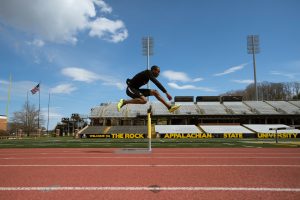
Being on a campus of 18,811 students and only 707 of them are black or African-American can be hard for some students.
Cierra Palmer is an African-American sophomore public health major. She believes that App is set in their ways on who they recruit to the school as a whole.
“I feel like they’re very set on who they bring in to campus and who they market to,” Palmer said. “They focus on one market group, which is basically usually white, upper-class students, and don’t really focus on marginalized students or lower-income students.”
Palmer feels that once people of color get to App they do not feel comfortable and have different issues when they first get there.
“I saw last year coming in as a freshman that a lot of people had left after the first couple of months or left after the first semester just because they didn’t feel comfortable here,” Palmer said. “They didn’t think App was home for them.”
McLean feels that athletes of color have some advantage of him and the whole athletic department being there for them if they are struggling to adjust.
“(W)hen I have to recruit kids I really have to you know let them know how it was when I was at school and let them know — let the parents feel safe that it’s going to be okay to be here,” McLean said. “On the other hand if they are just a normal student they don’t have nobody like me to tell them those things.”
Palmer echoed that statement and believes that athletes who come to campus have a good support system with the other athletes they come in with but not necessarily a better support system.
As an athlete, Forrest does see the diverse side of campus and the people he is around are like him.
“I mean once you get adapted to the culture here, once you actually go to the school, it doesn’t really look like it’s ‘oh it’s just a few black people’ because you know a lot of athletes are black and that’s most of the people you are going to be around,” Forrest said.
App State employes 50 EPA full and part-time black or African-American staff, 13 State Personnel Act full and part-time staff and 24 black or African-American full or part-time instructional faculty as of 2016, according to IRAP.
In 2016, white full or part-time instructional faculty made up 91.3 percent. White faculty made up 89.4 percent of the EPA (now EHRA) staff and 93.8 percent of SPA staff.
When Palmer first got here, she did not really see people around campus that looked like her and did not know really where support can come from.
“When you first get here you don’t really know the clubs and organizations that can support you. A lot of the multicultural student organizations, you don’t really know those when you get here,” Palmer said.
The Multicultural Center is where Palmer hangs out a lot. She was part of Linking Education and Diversity, which she found to be a good support system for her.
“(I)f you didn’t do that program then you don’t have that support system at all which make a lot of people want to transfer because there’s nothing comfortable here for them,” Palmer said.
One of the other things that Brandon Smith and Palmer both mentioned is being stereotyped as athletes because of their skin color.
“Most of the time I’m like the only black student in there and they just automatically assume I am an athlete,” Brandon Smith said. “Which yeah I am an athlete but sometimes you don’t want to be put down into that just that aspect of like — and most people think you’re just here cause you’re an athlete but I actually have more academic scholarship money than I do athletic scholarship money.”
Palmer also feels that even though she is not an athlete, people stereotype her as one because of how she dresses and her skin color.
“A lot of people think that I’m here for athletics. Mainly because I dress like this a lot, so it looks like I’m just one of the athletes, which is very problematic,” Palmer said. “It’s biased. We’re not here just because we’re athletes, we’re here because we want to learn.”
After being here for 20 years, as a student and as a coach, McLean thinks that the school is getting better but can always do more to improve.
“I mean no it’s one of those things that if something’s behind you can always get better and move forward on it,” McLean said. “I think Appalachian State is a great institution. I’m speaking from coming from experience of going to school here, of being an African-American on campus and coming back to work here.”
“I think the university is doing the best that they can in terms of accommodating the different groups that make up the different demographics on campus.”
On Aug. 18, 2017, chief diversity officer, Dr. Willie C. Fleming, published a letter about updating diversity on campus. In the letter, Fleming talked about App State embracing “Inclusive Excellence” as a university.
“If we are to be inclusive and excellent about it, we must communicate to all of our students, faculty, staff and administrators, from all walks of life, that they are valued, respected and supported,” Fleming said in his letter.
In the spring of 2017, a campus-wide survey was sent out as well as focus group interviews to get a feel for what the student body felt.
“The findings of the research confirmed a few things we were aware of and uncovered some concerns we were not,” Fleming said in his letter. “We are the first to admit, as a university, we have much work ahead of us in the area of diversity and inclusion.”
Fleming also said in his letter that the university has had great success. Some of those great successes come from the Chancellor’s Commission on Diversity which was formed in 2013.
While it was formed in 2013, Chancellor Sheri Everts charged the group to “provide recommendations focused on the recruitment and retention of students, staff and faculty from underrepresented groups,” in 2014.
In 2015, the group came up with 14 proposals that have been acted on or are under consideration.
“I know a lot of people that work with them (Chancellor’s Student Advisory Board for Diversity) and I’ve seen a lot of the things that they do,” Palmer said. “They send letters to prospective multicultural students, they do Multicultural Prospective Student Day, which is something I did before I came in.”
She feels that they may be limited in what they can do because of funding.
Some of the initiatives include “engaging a consultant to provide education to all supervisors on the topic of creating an inclusive campus,” “creation of a formal mentoring program for students from underrepresented groups” and “conduct a campus climate survey every three years and annual focus groups to assess the inclusive nature of the campus.”
The formal mentoring program was created in the 2015-16 school year called L.E.A.D. which Palmer was apart of.
“If you did the sub-orientation, which is L.E.A.D., which is Linking Education and Diversity, like yeah, you know that you’re building that support system when you first come in,” Palmer said.
Both McLean and D.J. Smith see a difference on campus and around Boone from when they were athletes at App.
McLean said that he has seen it grow from a place that had very little diversity to where it is now since he has been at the school.
D.J. Smith said that he cannot remember the exact percentage but he can tell that diversity has definitely risen.
Calder believes that in the past diversity was not very diverse, but it is becoming a more and more diverse campus not just in regards to race.
“I think (App’s diversity) is growing, dealing with diversity not even with color but people with different race, religion like different people everywhere on campus,” Calder said.
Whether walking around campus or reviewing statistics, it is easy to see the general lack of racial variety at App State. Even in athletics, the most racially diverse section of students on campus, white students make up over 63 percent of the population.
However, the university’s initiative to recruit more minority students, lead by the Chancellor’s Commission on Diversity, has kept campus diversity growing on a consistent basis in recent years.
“As far as App is concerned, you know, it is a predominantly white institution but then you flip it over and you look at athletics and you see a totally different picture than what the university as a whole depicts you know when you are talking about demographics,” Insley said. “I think the university is doing the best that they can in terms of accommodating the different groups that make up the different demographics on campus.”
*We reached out to the Office of Equity, Diversity and Compliance, Admissions, Leroy Wright, J.J. Brown, Coach Satterfield and Coach Brown.*
We hope you appreciate this article! Before you move on, our student staff wanted to ask if you would consider supporting The Appalachian's award-winning journalism.
We receive funding from the university, which helps us to compensate our students for the work they do for The Appalachian. However, the bulk of our operational expenses — from printing and website hosting to training and entering our work into competitions — is dependent upon advertising revenue and donations. We cannot exist without the financial and educational support of our fellow departments on campus, our local and regional businesses, and donations of money and time from alumni, parents, subscribers and friends.
Our journalism is produced to serve the public interest, both on campus and within the community. From anywhere in the world, readers can access our paywall-free journalism, through our website, through our email newsletter, and through our social media channels. Our supporters help to keep us editorially independent, user-friendly, and accessible to everyone.
If you can, please consider supporting us with a financial gift from $10. We appreciate your consideration and support of student journalism at Appalachian State University. If you prefer to make a tax-deductible donation, or if you would prefer to make a recurring monthly gift, please give to The Appalachian Student News Fund through the university here: https://www.givecampus.com/campaigns/54088/donations/new?designation_id=faa93386&
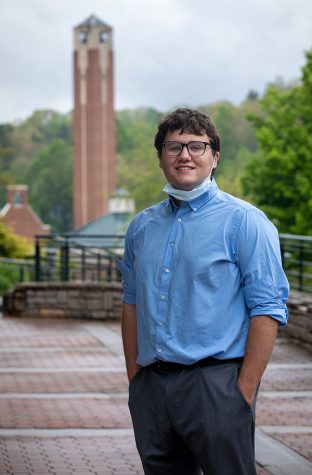
Moss Brennan (he/him) is a senior journalism major with a minor in political science and media studies. He has worked on The Appalachian since freshman...

